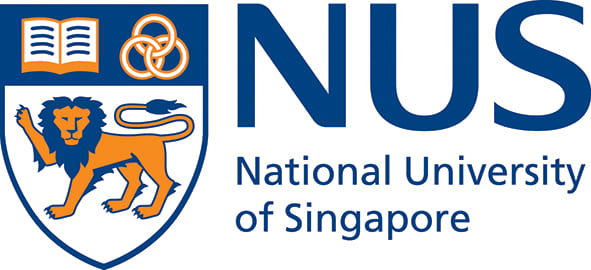Professor William Martin
Visiting Professor – MSc Audiology
Division of Graduate Medical Studies
Yong Loo Lin School of Medicine
Office: NUS Block MD7 Level 3.
Email: entwhm@nus.edu.sg
Tel: (65) 6601-3731
Prof Martin graduated from the University of California, Irvine with a BSc (Honours in Research) in Biological Sciences and the University of California Santa Barbara/San Francisco joint doctoral program in Speech and Hearing Sciences emphasizing computational physics applied to neuroscience of the auditory system. His university education was followed by a post-doctoral fellowship at the Technion-Israel Institute of Technology in clinical neurophysiology. Prof Martin is globally recognized for his expertise in tinnitus and sound tolerance disorders, noise-induced hearing loss, health communication science applications to hearing health behaviours, intraoperative neurophysiological monitoring, and electrophysiology. His recent work has been in addressing hearing health issues in Singapore seniors, community-based audiology, and the development of boothless audiometry protocols.
MSc Audiology
- Acoustics
- Anatomy & Physiology
- Clinical Audiology (Public Health and Tinnitus)
- Electrophysiology Assessment
Others
-
NUS Adult Hearing Screener Training and Certification Course
-
NUS Boothless Audiometry Protocol Training Course
-
NUS Tinnitus and Sound Tolerance Disorders Evaluation and Management Course
-
Dangerous Decibels Educator Training Workshops
- Neurophysiological correlates of tinnitus
- Boothless audiometry
- Participator sensing in community noise measurement
- Community-based models of hearing healthcare delivery
- Noise-induced hearing loss and tinnitus prevention education for children and adults
- Application of STEM gaming to hearing health education
- Tinnitus management
- Dipole localization modelling of far-field evoked potentials
- Changing hearing health behaviours in elderly populations
Healthy hearing healthy ageing
We have developed and are implementing hearing testing equipment configurations and test protocols that permit hearing screening and threshold testing outside the confines of sound booths. The project established community hearing clinics and is conducting studies of comparative wait times and patient experience differences between community clinics and restructured hospital audiology clinics. We are also investigating extrinsic and intrinsic motivational factors related to elderly Singaporeans in terms of help-seeking behaviours for hearing loss, acquisition and utilization of amplification devices.
Dangerous Decibels
Dangerous Decibels is an evidenced-based noise-induced hearing loss and tinnitus prevention program targeting children and adults with materials in 41 countries. Current Dangerous Decibels research is evaluating the effectiveness of the program adapted to different languages, cultures, and specialty interest groups (musicians, workers, sports participants). We are also developing and evaluating online training resources designed to certify Dangerous Decibels educators on a global scale.
- Meinke, D.K., and Martin, W.H. Boothless audiometry: Ambient noise considerations. Submitted: In press, J.Acoust.Soc.Am., 2022.
- Clavier, O.H., Norris, J.A., Hinckley, D.W., Martin, W.H., Lee, J., Soli, S.D., Brungart, D.S., Schurman, J.R., Larsen, E., Mehraei, G., Quigley, T.M. Reference equivalent threshold sound pressure levels for the Wireless Automated Hearing Test System. J.Acoust.Soc.Am., 2022;152(1):601-608.
- Sobel, J.S, and Martin, W.H. Beyond the workplace. The Noise Manual, 6th ed., Eds. D.K. Meinke, E.H. Berger, R.L. Neitzel, D.P. Driscoll and K. Bright. American Industrial Hygiene Association. Chapter 16, pp 409-418, 2022.
- Diong, H.T., Neitzel, R., Martin, W.H. Spatial evaluation of environmental noise with the use of participatory sensing system in Singapore. Noise Mapping 2021:8:1-13.
- Martin, W.H., Sobel, J.L., Griest, S.E., Howarth, L.C. and Becker, T.M. Program sustainably: Hearing loss and tinnitus prevention in American Indian communities. Am J Prev Med 2017;52(3S3):S268–S270.
- Martin, W.H., Griest, S.E., Sobel, J.L. and Howarth, L.C. Randomized trial of four noise-induced hearing loss and tinnitus prevention interventions for children. International J. Audiology, 52:S41-S49, 2013.
- Shi, Y-B., Burchiel, K, Anderson, V.C. and Martin, W.H. Deep-brain stimulation effects in patients with tinnitus. Otolaryngolog Head Neck Surgery, 141: 285-287, 2009.
- Martin, W.H. and Stecker, M.M. ASNM position statement: Intraoperative monitoring of auditory evoked potentials. J Clin Monit Comput, 22:75-85, 2008.
- Meikle, M.B., Stewart, B.J., Griest, S.E., Martin, W.H., Henry, J.A., Abrams, H.B., McArdle, R., Newman, C.W. and Sandridge, S.A., Assessment of tinnitus: measurement of treatment outcomes. Prog Brain Res, 166:511-21, 2007.
- Martin, W.H., Sobel, J.L., Griest, S.E., Howarth, L. and Shi, Y-B. Noise-induced hearing loss in children: Preventing the silent epidemic. J. Otology, 1(1), 11-21, 2006.
- Shi, Y-B. and Martin, W.H., Deep brain stimulation – A new treatment for tinnitus? J Otology, 2(1), 1-6, 2007.
- Martin, W.H., Pratt, H. and Schwegler, J.W. The origin of the human auditory brainstem response wave II. Electroencephalogr Clin Neurophysiol, 96: 357-370, 1995.
- Martin, W.H., Schwegler, J.W., Scheibelhoffer, J. and Ronis, M.L. Salicylate induced changes in cat auditory nerve activity. Laryngoscope, 103:6, 600-604, 1993.
- Starr, A., Amlie, R.N., Martin, W.H. and Sanders, S. Development of auditory function in newborn infants revealed by auditory brainstem potentials. Pediatrics, 60: 831-839, 1977.
- Visiting Professor, Department of Otolaryngology, Yong Loo Lin School of Medicine, NUS (Primary)
- Visiting Professor, Saw Swee Hock School of Public Health, NUS (Secondary)
- Co-director, Dangerous Decibels
- Member, Society for Audiology Professionals (Singapore) (SAPS)

